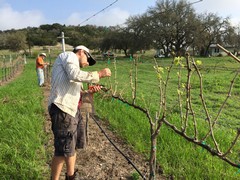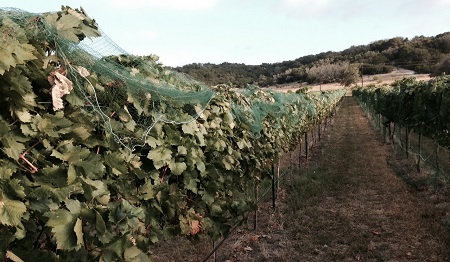Kuhlman Cellars Blog
Dog Days of Summer 2022
If you look to the east just before dawn you will see the Sirius star, also known as the “dog star”. It is the brightest star in our sky and is known as Orion’s hunting dog. It is most clearly visible in the late summer. The ancient Greeks noticed this star rising parallel to our sun and believed that this is what caused the scorch of late summer which is why this time of year is called “the dog days of summer.” On Sunday, July 17th, Kuhlman Cellars and the Humane Society of the New Braunfels Area (HSNBA) was shining just as brightly as Orion’s pup while celebrating the second Dog Days of Summer event at the Kuhlman Cellars Estate.
We once again partnered with HSNBA in their effort to give pets a second chance at a first-class life. You may have met our vineyard cat, Nico, lounging around the water station or stalking through the tall grass of the garden. Nico used to be a resident of HSNBA before he called the Kuhlman vineyard home. Some of our guests have their own former HSNBA residents in their homes, some just have a heart for misplaced fur babies. Dog Days was also a great opportunity to simply get back out to our vineyard and soak up the vibe. The Kuhlman team enjoyed catching up with everyone while raising money for a wonderful cause.
One dollar from each bottle sold was donated to the HSNBA and we released some monumental landmark wines for this event!
Our 2021 Calcaria has big bright citrus notes of melon and honey-suckle with the satisfying body Calcaria is known for.
Then, of course, our 2021 Estate Rosé, a Provence-style summer helper made from grapes taken from the vines right here in the Kuhlman Estate vineyard.
Finally, after NINE years, we released our first Estate Red. This Carignan forward blend is fruitful and medium-bodied and a wonderful summer treat for wine lovers that don’t want to put their reds away for the summer. A glass of our 2019 Estate Red is nine years of love, care, family, and friends in a five oz pour.
We had great live music on the patio and, for our pups, we had “barkuterie” plates with meat and cheese. We put the doggie pools out to beat the heat and, as always, glasses were poured by friendly faces excited to show you and your fur family some love.
Sunscreen was applied, pets were played with, and bottles were opened. And $416 was raised towards finding pets new forever homes!
Thank you to everyone who came out and was a part of our story. Until next summer!
Cheers!
What is Non-Vintage?
First things first, let’s look at definitions.
What is “vintage” and what does it mean?
When a year is listed on a wine label – for example, 2017 Marl, “2017” is the vintage year. The vintage year listed on a bottle denotes the wine within that bottle was made from grapes harvested in that specific year. In our example, the vintage year is 2017. In the United States, a wine must be at least 95% from a single year in order to be labeled with a vintage year.
A “non-vintage” wine is made by blending grapes from two or more harvest years. The newest releases of Calcaria and Hensell are non-vintage wines. Our newest release of Calcaria is a refreshing blend of Roussanne, Marsanne, Trebbiano, Viognier and Albarino grapes. Familiar notes of ripe pear and honeysuckle are enhanced by delightful hints of papaya and white peach. Our newest Hensell is a blend of Cinsaut, Grenache, Carignan and Mourvedre. A classic, delicate Provence style rosé, this wine is reminiscent of fresh summer strawberries and cream.
So, does vintage year have anything to do with quality?
Great question! The answer is “yes and no”. Look, we all have good days and challenging days, right? Well, vineyards can have good and bad years. Depending on what happens in the vineyard in any given year, we could have a range of possible outcomes impacting quantity and quality of our fruit. In Texas, the biggest issue isn’t quality - it is Quantity.
A great vintage in Texas is when we actually harvest fruit. Freeze. Hail. Hurricanes. Drought. We have all sorts of weather related calamities waiting to destroy our fruit!
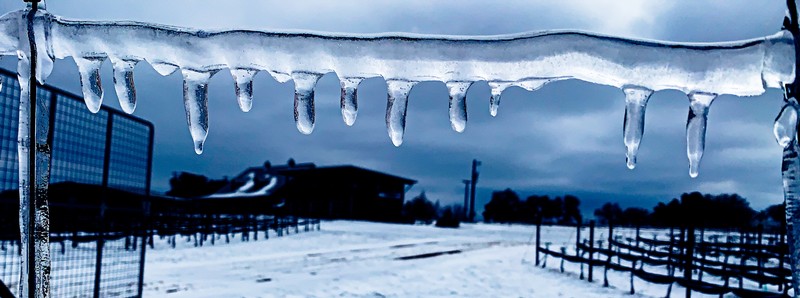
The “good vs. bad vintage” analysis is mostly dependent on weather - something we can’t control. In Texas, we often see wild fluctuations in the quantity of fruit. For example, if a vineyard is hit by hail, we might lose 60% or more of the crop im 5 minutes/ If we have a late spring frost, we can lose 100% of the crop before the vines even gets started. Alternatively, if we have ideal growing weather with ample rain, we might see excess fruit. Historically, we have not had “excess” fruit, but rather we have seen weather events reduce our crop yield. For example, in 2013, our first full commercial year, we lost 90% of our fruit to late spring frosts. More recently, we lost 50% of our fruit to a combination of frost and hail in 2020!
It can be very challenging to deal with high fluctuations in our fruit quantity. One way to smooth out quantity variations is to share of the “excess” fruit from one year with a “shortage” crop from another. We did this in 2020 in response to severe winter issues reducing our Texas High Plains crop. We simply held onto some of our awesome 2019 wines to support our lower volume 2020. This is where “balanced wine” shines through.
The Champagne houses in France (full disclosure: Champagne is my #1 go-to wine, closely followed by Kuhlman Cellars Hensell) utilize blending wines from different years to create non-vintage wines that express the “house style”. Where a single vintage can tell a story of a particular year in the life of a winery, a non-vintage wine can tell a story of life in a particular winery. At Kuhlman Cellars, we aim to provide the best and most balanced wines Texas has to offer every year – even if the wine represents more than one vintage year!
Wine and Wildflowers
Beautiful Spring Color Awaits Your Visit!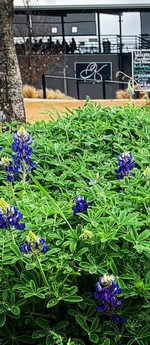
The Texas Bluebonnets loved the snowpacalypse because the snow acted as a great insulator. The leaves, shaped like the bonnets pioneer women wore, peeked out of their icy covers awaiting sunshine and temperatures in the 70’s. At Kuhlman Cellars they will greet you at our entrance and in the parking area along with some late blooming daffodils. They form a blue carpet on the south side of the wine garden beneath the pink peach and white plum blossoms. Look closely for purple-bonnets and you might even spy a red or white bonnet.
Soon the red Indian Paintbrush will burst forth, followed by yellow coreopsis. Red poppies are popping out, and should be at their peak in late March and April. Take a walk and see how many different colors and color combinations you can find.
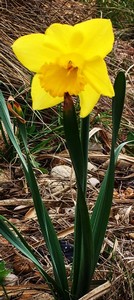 |
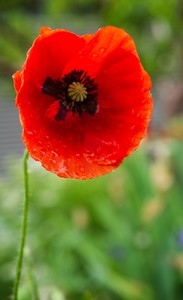 |
Return frequently to witness the sequential blooms of delphiniums, blanket flowers, daisies, Mexican Hat, Black-eyed Susan, Rudbeckia, Butterfly Bush, etc that are host and food plants for butterflies. Sit near the fountain and relax to its musical splashing that sends droplets out for the pollinators.

Growing Grapes in Texas Ain't Easy
Whew, we made it past May 4th! Why the sigh of relief? We are celebrating because in 2013, Texas had a devastating frost decimating the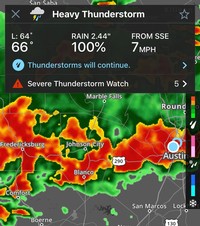 2013 grape crop!
2013 grape crop!
Growing Grapes in Texas Ain’t Easy
We’ve been watching weather forecasts and our vines with prayers and fingers crossed since late February. At the end of February, you may recall a frigid cold snap, where luckily our vines were mostly asleep and so were unaffected. Some of our friends and neighbors in the hill country weren't as fortunate and suffered losses.
As is said of Texas weather, if you don’t like the weather, just wait a minute! And now as the threat of frost is removed, our eyes turn to hail.
Hail can wreak terrible damage on a vineyard (or house, car or really anything) in a short amount of time. Already, two of our three Hill Country vineyards have been hit with hail. Twice in one week, the Cobb Family Vineyard suffered damage from a hail storm. Most recently, the thunderstorm of May 3 also brought hail to our newest vineyard of Petite Sirah at Barons Creekside, right inside Fredericksburg. Luckily, damage to both vineyards doesn’t appear to be significant and we will adjust our canopy management to adapt.
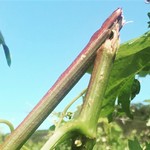
We take our challenges as a reminder of our connection to the land we farm, the community that supports us, and the miracle that is the resulting fruit. In every bottle there is a story: a labor of love, a commitment to faith, and the rewards of perseverance.
Kuhlman Cellars: What's in a Name?
I was leading a tasting the other day and someone asked where our wine names came from and who named the wines. The very short 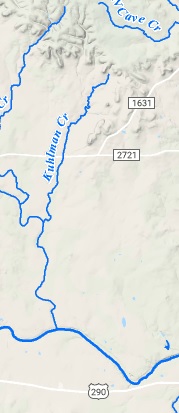 answer: me! The longer answer will be revealed in two parts: our winery name and then our wine names.
answer: me! The longer answer will be revealed in two parts: our winery name and then our wine names.
When Jennifer and I “bought the farm” back in 2010, we specifically sought a place both peaceful to our souls, but also furthering our family goal of a personal vineyard. The 34 acres we bought has a beautiful 10 acre pasture but also some hills and a small valley. Kuhlman Creek forms on this property, which is sited at the northern ridge of the Pedernales River Valley. As we face south, we have a beautiful view stretching 4 miles and several hundred feet gradual drop down to the river. It’s stunning and peaceful.
When we launched the winery, we struggled with a name. We didn’t want to name it after our family, because the winery isn’t about us. Further, we didn’t want to distract from our amazing wines and the meaningful experience of food and wine pairings. Some of you know we originally thought Kuhlman Creek Cellars, but dropped “creek” when we realized how many places already have a “creek” as part of their name! Kuhlman is anything but a follower or part of the crowd - we’ve completely redefined the meaning of wine and food pairings as related to wine tastings.
Back in 2010, the creek was a live water stream and had flowed seemingly uninterrupted for years, even through the terrible 1950’s drought. Our oldest son even caught some small perch in the creek, much to my surprise and a lost bet! However, the extreme drought of 2011-2013 changed that and the creek dried up. It’s flowing again on a seasonal basis, though the importance of water on all of our ecology can’t be understated. The Texas A&M Forest Service estimates approximately 300 million Texas trees perished because of the 2011 drought!
The winery is named after water - the foundation of life. Our wine names are about the dirt in which the vines grow, and their story will be told in a later blog. When we add in our unique Texas weather and our yearly labor of love in the vineyard and cellar, the result is wine. Really great wine!
Wine Blends and New Red Wines
Where did January go?!
I know I feel this way every new year, but we’ve turned around, took a breath, and have already flown into February! That’s exciting though because that means we’ve also enjoyed one of our favorite events: the Annual Super Bowl Tailgate party! That day was so much fun with wine and incredible food. And, we won the weather lottery - AGAIN - with stunningly perfect weather. It’s always risky in February in Texas, but we all adapt and do what we do.
Another reason I look forward to February: it’s time to think about our new vintage red wine blends! It’s an exciting and anticipatory time when we start talking about blends, volumes, and goals. It’s more enticing when Benedicte comes around with sample bottles and 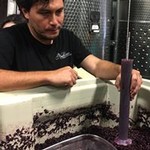 graduated cylinders.
graduated cylinders.
Our red winemaking process follows a general pattern: harvest in the fall to make red wine in individual lots from our different vineyards. Let the wine begin maturing in tank and barrel until February the following year, when unique terroir character becomes more evident. Bénédicte then begins her blending magic crafting the wines we’ve come to love as well as potential new. By the end of March, we typically settle on the blends. By June, the blending is typically complete and the wines then rest in barrel till bottling. Bottling is a long process guided by the wine’s maturation progress. Our first red bottling tranche typically happens in June, two years after harvest. A second bottling typically happens around 28 months post-harvest. We now have some wines which we are aging even longer to see how they develop in the barrel. Once bottled, the wines then rest anywhere from 4 to 12 months before release. It is a long process!
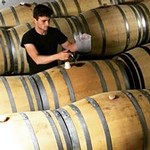 For 2017, we have some familiar red wines in barrel: Alluvé, Barranca, KanKar, Merlot, Zinfandel, Gypsum and Malbec-Merlot. Excitedly, we are producing several new wines, including: a Brunello Sangiovese, a Bordeaux Blend (Cabernet, Merlot and Malbec) as well as a Newsom Vineyard blend (Tempranillo, Cabernet, Malbec). These new wines are amazing, already complex, and teasing and testing the patience of us all. Bottling of these 2017 red beauties starts in June, but some of these wines might not be bottled for another couple of years. Patience!
For 2017, we have some familiar red wines in barrel: Alluvé, Barranca, KanKar, Merlot, Zinfandel, Gypsum and Malbec-Merlot. Excitedly, we are producing several new wines, including: a Brunello Sangiovese, a Bordeaux Blend (Cabernet, Merlot and Malbec) as well as a Newsom Vineyard blend (Tempranillo, Cabernet, Malbec). These new wines are amazing, already complex, and teasing and testing the patience of us all. Bottling of these 2017 red beauties starts in June, but some of these wines might not be bottled for another couple of years. Patience!
We don’t yet know the blends for 2018… ask us in a couple of months. We do know the Brunello will in the line up along with our regulars. What else awaits? We will just have to wait and see… there is no speed in winemaking, just the careful cadence of nurturing the vineyard and wine.
See you at the estate soon!
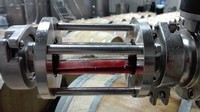
First Freeze of 2018!
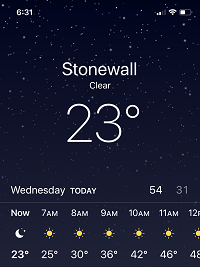 23* on November 14 brought the 2018 viticulture year at our three Fredericksburg, Texas vineyards to a fast frozen end!
23* on November 14 brought the 2018 viticulture year at our three Fredericksburg, Texas vineyards to a fast frozen end!
2018 was a challenging year in many respects, though really just another typical grape growing effort in Texas. I often describe Texas viticulture as one of survival. We have many risks to navigate: springtime frost, hail, disease, animal predation and "tropical rain events" (e.g., Hurricanes). Any year we harvest fruit is a success!
2018 started a little later than 2017, with the vines waking up in early March rather than late February. We avoided springtime frost and by April, growth was fast and abundant as the vines burst forth with the energy of Spring!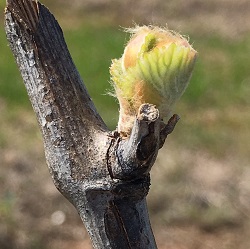
We had a very hot and dry growing season. The heat spike of June into July proved challenging as the vines struggle in excessive heat. The Estate Carignan, in prticular, seemed to suffer. The warm weather though, generally had the vines progressing through their maturation efforts quickly.
The estate fruit came in beautifully! We were pleased to get the first harvest off the Mourvedre in Block 1. This will be part of the estate Kuhlmanation Rose. We also welcomed the first ever harvest from our partner vineyard at Barons Creekside inside the city limits of Fredericksburg. This Petite Sirah vineyard is developing beautifully. Finally, we were relieved to harvest fruit at Cobb Family Vineyard again, after the racoon predation of 2017. We took the last fruit from the estate Carignan block 5 at the end of August. The fruit was beautiful. We harvested just in time too, as Texas weather rotated to a very wet early fall!
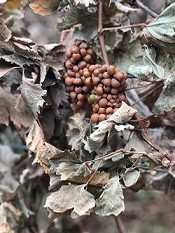 Keeping the vines healthy with all the rain was a challenge - the muddy vineyard made it tough to enter either on foot or tractor! Yet, the team managed and the vines made it through - and are looking great for next spring.
Keeping the vines healthy with all the rain was a challenge - the muddy vineyard made it tough to enter either on foot or tractor! Yet, the team managed and the vines made it through - and are looking great for next spring.
After the first freeze on November 14, the vines quickly went to sleep. As we walk the vineyards, we see the remnants of the season, including the occasional late developing cluster, now frozen in time. Texas viticulture isn't easy and it's never predictable. However, when successful, we are rewarded with distinctly unique, quality driven wines. We look forward to sharing the new vintage with you... but only when the wines are ready. For now, practice patience!
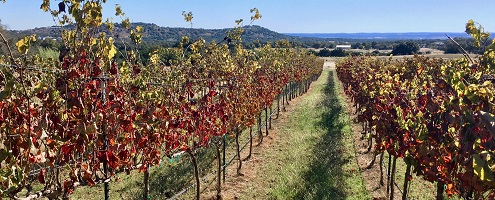
2016 Bud Break!
Hang on to your hats folks – Bud Break is upon us early in 2016.
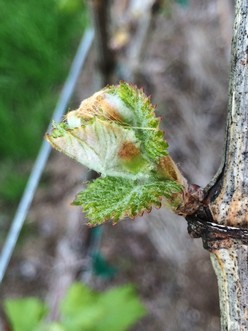
The grapes awoke early this year. This is because we had an overall mild winter, but also because we had a very warm February. Let’s put things in perspective. Our 2016 bud break was March 7. This is the earliest we have encountered at the family vineyard. And it is the earliest by a lot – last year in 2015, we didn’t achieve bud break until March 24! Bud break in 2014 and 2013 was March 21 and March 15th respectfully. Therefore, March 7 represents about 3 weeks earlier than 2015 and 1 week earlier than our previous record.
Oh boy!
So far, the weather looks promising. Though the weather isn’t up to us. Instead, we work hard to keep the vines healthy and we stay prepared to take whatever actions we can to protect those tender buds in cases of cold weather. Site selection is critically important to help defend against frost. At the family vineyard, we have nearly 2 miles of clear valley spreading out south of the vineyard along with about 200 feet of elevation drop. This allows the cold air to simply flow out of the vineyard and not settle to impact the vines.
As we progress through the growing season we look to transition from risk period to risk period. We start with frost, proceed through hail and ultimately encounter mold / fungus and proceed on to four legged and two winged pests in the form of mammals and birds who want to eat our precious fruit. We don’t breathe easy until the fruit is harvested and in the cellar!
With some fortune and very hard work, 2016 will not only see the third family vineyard harvest, but also the first at the Estate. We will see, but hopes are high and optimism strong.
Vina Vita!
Carignan
Carignan is a red wine grape known for producing well structured, dry red wines, yet little seems to be written 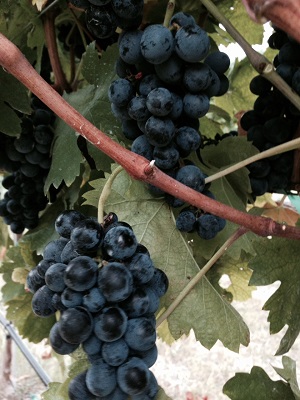 regarding this “under the radar grape”. The truth is, it has significant prominence in both the old world and new world and it is more commonly blended in everyday red wines than one might think, despite not gaining much press. Pronounced “care-in-yawn”, it is a powerful and opulent grape known for deep and concentrated color, bold tannins and high retained acidity. This is no wimpy fruit; it is structurally sound and offers tremendous presence, especially when utilized as a primary blending grape.
regarding this “under the radar grape”. The truth is, it has significant prominence in both the old world and new world and it is more commonly blended in everyday red wines than one might think, despite not gaining much press. Pronounced “care-in-yawn”, it is a powerful and opulent grape known for deep and concentrated color, bold tannins and high retained acidity. This is no wimpy fruit; it is structurally sound and offers tremendous presence, especially when utilized as a primary blending grape.
For those of you not familiar with this grape, just imagine if the well know Merlot and Syrah grapes were to mate, the best qualities of each of those varieties are similar to what Carignan showcases. The variety is presumed to be from Spain originally and is still prevalent in Catalonia, Spain. It is also well known in southern France, from the Languedoc-Roussillon region in particular. California has been growing and blending Carignan for decades and there are mature Carignan vines producing fruit in the Texas High Plains. This grape variety needs to be cultivated in relatively warm and dry climates, as it can be prone to powdery and downy mildew and requires a warm growing season to achieve proper ripeness. The vines tend to be vigorous and must be well managed to produce quality, concentrated fruit. Having said that, Texas seems like a pretty great place to grow Carignan.
At Kuhlman Cellars, we originally planted Carignan in our family experimental block in 2012. We believe this is the first planting in the Fredericksburg AVA. We also believe in its potential as a possible backbone grape for our blending family. It provides a well-balanced yet massive backbone if crop yields and vine canopy are well managed. For those of you who have tasted the 2012 Barranca, you know exactly what I mean. Wines with finesse, power and character come from these interesting blends. We also planted Carignan in our estate vineyard in the Texas Hill Country in 2015. Our largest block, Block 5, with approximately 2.3 acres of Carignan, will be producing fruit in the coming years on the Kuhlman Cellars Estate property. Our usually dry/hot summers, as well as our clay topped limestone soils in central Texas provide a suitable environment for harvests of intense, ripe fruit from our vineyards, so the future of Carignan in our wine program is exciting!
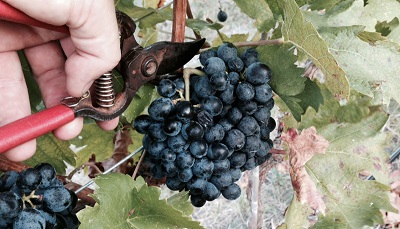
Below is a list of known Texas vineyards currently growing Carignan:
Bingham Family Vineyards- Texas High Plains
Brushy Creek Vineyards- Alvord, Texas
Buena Suerte Vineyards- Texas High Plains
Kuhlman Cellars- Texas Hill Country
La Pradera Vineyard- Texas High Plains
Martin Vineyard- Texas High Plains (believed to be the oldest Texas vines still in production)
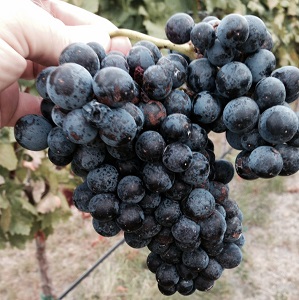
Let’s celebrate the wine life, Vina Vita, and savor everything that is… Carignan.
Cheers!
Estate Vineyard Block 2: Marsanne
For those of you who’ve recently visited the winery, you may have taken note of the new vineyard and the growing vines. With all the rain, we have a wide range of growth!
Overall at the estate, we have five different vineyard blocks ranging from just under and acre to about 2.3 acres in size. This represents 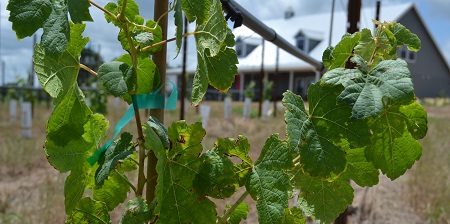
Block 2, just north of the winery building and the vineyard section you see when you first drive into the estate, is planted with Marsanne. Marsanne? This grape may be unknown to many folks, but we believe it holds good promise as we continue seeking the best varieties for our climate and soil.
So, what is Marsanne?
Marsanne is a white grape, thought to have originated near the town of Marsanne, France, located in the northern Rhone valley. While the name may not be familiar, white wines from Hermitage, St. Joseph, Crozes-Hermitage and St-Peray are often predominately Marsanne blends. In fact, Marsanne is the most widely planted white grape variety in the northern Rhone. Marsanne is also found in the southern Rhone valley, where it can be found in white Cotes du Rhone wines.
Interestingly enough, Austrailia has the most Marsanne vines in the world, accounting for about 80% of the worldwide total. Marsanne was brought there in the 1860’s and the oldest Marsanne vines in the world are found there dating back to about 1927.
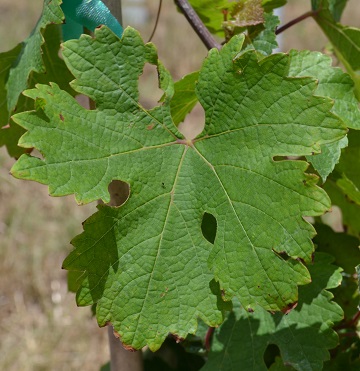 There isn’t much Marsanne yet growing in Texas. A couple of growers up in the High Plains are growing it, including VJ Reddy and Tyler Oswald. Mike McHenry has a block of Marsanne up near San Saba.
There isn’t much Marsanne yet growing in Texas. A couple of growers up in the High Plains are growing it, including VJ Reddy and Tyler Oswald. Mike McHenry has a block of Marsanne up near San Saba.
Marsanne in the Vineyard
We selected Marsanne for our estate vineyard because of the expected viticulture characteristics. It tends to bud late in the spring, typically about 11 days later than Viognier, which is important when we are dealing with spring frost events. It also tends to have less disease issues, partly due to the looser grape clusters which promotes better air circulation. It also produces wines of great character and structure, something we like when considering blending with our other white grape planted in Block 4 (and sister vine to Marsanne) – Roussanne.
So far at the estate, the vines are growing well in our clay-dominated soil over a limestone base. The rain so far has allowed the vines to grow without supplemental irrigation, a rare treat here in Texas. However, the high rainfall we’ve had this spring is causing its own challenges with standing water and disease pressure. Of course, we won’t get any fruit from these vines this year, though we might get a small sample in 2016. Look for a true harvest in 2017 with wine released perhaps in 2018.
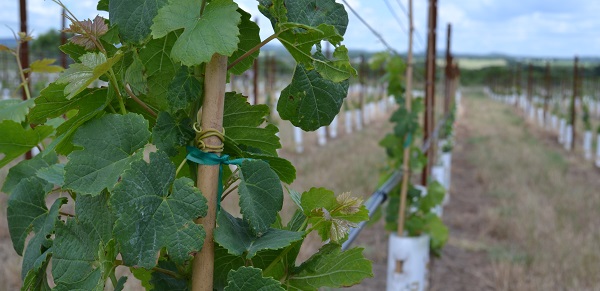
Also, feel free to come on out and walk the vineyards and look at these wonderful vines!
